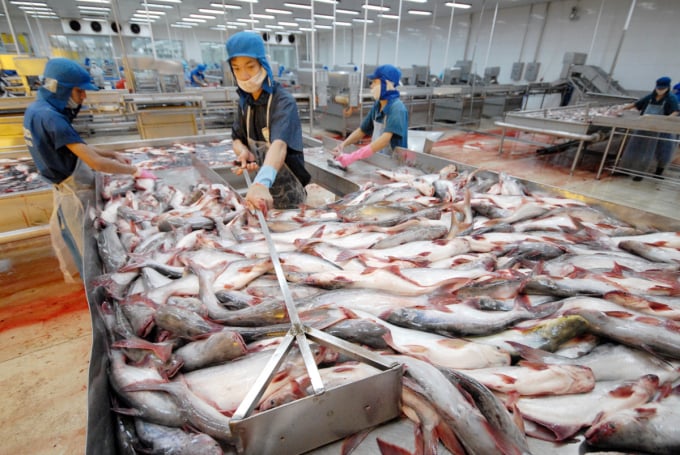November 27, 2025 | 18:11 GMT +7
November 27, 2025 | 18:11 GMT +7
Hotline: 0913.378.918
November 27, 2025 | 18:11 GMT +7
Hotline: 0913.378.918

China will lower tariffs on several high-quality seafood products.
According to Vietnam Association of Seafood Exporters and Producers (VASEP) the Customs Tariff Commission of the State Council of China on December 15 announced a plan on tariff adjustment for 2022.
The Chinese Finance Ministry said it will impose tax rates under the Most-Favored-Nation (MFN also known as normal trade relations) on a wide range of products. Accordingly, the country will lower tariffs on a number of consumer goods. The Ministry of Finance of China declared that “salmon and cod are high-quality aquatic products and will enjoy duty reductions to meet people’s needs for a better life. While creating a good atmosphere for the Beijing Winter Olympics, it will respond to the trend of consumption upgrades.”
As one of China's important imported seafood, the import tariff of fresh Atlantic salmon (HS code: 03021410) will be reduced to 7%. The tariff on Arctic shrimp (HS code: 0361640) will be reduced to 2%. For the frozen Alaska pollock (HS code: 03036700) import tariff rate is lowered to 2%. To boost trade openness in accordance with the free trade agreements and preferential trade agreements signed between China and relevant countries and regions, duty reductions will be imposed on a number of products from 29 countries and regions from early 2022.
Under the bilateral trade agreement between China and New Zealand, Peru, Costa Rica, Switzerland, Iceland, South Korea, Australia, Pakistan and Georgia and under the Asia-Pacific Trade Agreement (APTA), the duties will be further reduced. The free trade agreement (FTA) signed between China and Cambodia will take effect on Jan. 1, 2022 and tariffs on some certain products will be lowered.
Translated by Mai Tham

(VAN) China’s cooking oil is suddenly flooding into India. It all comes down to a soybean surplus that Beijing doesn’t quite know what to do with.

(VAN) An Giang promotes supply-demand connections, standardizes quality and builds value chains, creating a foundation for sustainable bird’s nest development and aiming to expand exports.
/2025/11/24/5339-4-nongnghiep-075331.jpg)
(VAN) Recently, the conference on 'Sustainable Fisheries Linkage Chain - Tilapia for Export' took place in Tien Hai commune, Hung Yen province.
/2025/11/21/4309-2-153400_128.jpg)
(VAN) Green and low-emission rice is paving the way for Vietnamese rice to enter high-end markets, marking the beginning of a transformation journey toward greening and elevating the national rice brand.

(VAN) ‘Right to Win’ outlines a national action plan that shapes a new vision for Viet Nam’s agriculture in an era of renewal and global integration.

(VAN) Lam Dong’s farmed sturgeon output this year is expected to reach 2,300 tons, worth VND 450 billion, affirming the brand’s position on the market.

(VAN) A surge in Ukrainian egg exports, largely driven by soaring sales to the UK over the last few years, has notably pushed up egg prices on the domestic market.